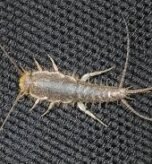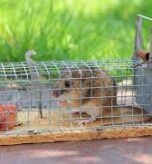Gnats, while tiny, can quickly become a major annoyance in your home. Their fast reproductive cycles mean a small problem can turn into a full-blown infestation overnight. If you’re wondering how to get rid of gnats, this guide is for you. We’ll provide a comprehensive overview of gnat identification, common attractants, and a range of strategies, from simple home remedies to professional pest control solutions.
Understanding Gnats: Common Types and How to Spot Them
The term “gnat” broadly covers several small, winged insects. Accurate identification is crucial because effective control methods are often species-specific.
Fungus Gnats
Fungus gnats are typically black with long legs and slender bodies, resembling miniature mosquitoes. You will commonly find them congregating around overwatered houseplants. While adult fungus gnats are harmless to humans, their larvae can damage plant roots, especially in seedlings. The larvae feed on fungi and organic matter in the soil.
Fruit Flies
Fruit flies are generally brown with prominent red eyes and have a more rounded shape. They are primarily attracted to overripe or fermenting fruits, vegetables, and sugary drinks. You will often see them hovering slowly over their food sources in the kitchen.
Drain Flies
Also known as moth flies, these pests are fuzzy with moth-like wings, giving them a heart-shaped appearance at rest. They prefer moist environments like drains, sewers, and gutters, where organic buildup provides an ideal breeding ground.
The Gnat Life Cycle: Why They Multiply So Fast
Gnats undergo a four-stage life cycle: egg, larva, pupa, and adult. This entire cycle can take as little as 3-4 weeks, with warmer temperatures accelerating their development. A female gnat can lay hundreds of eggs in her short lifespan. This rapid reproduction is why you need to act quickly to get rid of gnats before the population explodes.
What Attracts Gnats to Your Home?
To effectively get rid of gnats, you must first identify and eliminate what is attracting them.
Moisture and High Humidity
A primary attractant for many gnat species is moisture. Overwatered houseplants, standing water in saucers, and plumbing leaks create the perfect damp environment for gnats to breed.
Decaying Organic Matter
Gnats are highly drawn to decaying organic matter, which serves as a food source. Common sources include:
- Overripe fruits and vegetables left on the counter.
- Food residue in uncovered trash bins.
- Organic buildup in sink drains and garbage disposals.
- Decomposing leaves and roots in potted plants.
Easy Entry Points
Gnats can easily enter your home through open doors and windows. They can also hitchhike on items like houseplants or produce you bring inside.
Comprehensive Strategies to Prevent Gnats
Proactive measures are often the most effective way to manage gnat populations. These strategies focus on eliminating attractants and breeding sites.
Manage Moisture in Your Home
Since gnats thrive in moist environments, controlling moisture is critical.
- Avoid Overwatering Plants: Allow the top 1-2 inches of soil to dry out between waterings.
- Ensure Good Drainage: Make sure your potted plants have good drainage and empty any standing water in saucers.
- Fix Leaks Promptly: Address any plumbing or irrigation system leaks as soon as you find them.
- Use a Dehumidifier: In damp areas like basements, use a dehumidifier to keep the humidity below 55%.
Handle Food and Waste Properly
Minimizing organic debris is essential for preventing fruit and drain flies.
- Maintain Cleanliness: Keep your counters, stoves, and sinks clear of food residue.
- Store Produce Correctly: Store fruits and vegetables in the refrigerator or sealed bins.
- Manage Garbage: Take out the garbage regularly and use tightly covered trash cans.
- Rinse Recyclables: Thoroughly rinse recyclable bottles and cans before storing them.
Take Care of Your Plants
You can deter fungus gnats with specific plant care practices.
- Inspect New Plants: Check new plants for gnats before bringing them indoors. Isolate them for the first month to monitor for pests.
- Improve Soil Drainage: Use potting media with a higher proportion of perlite or sand to improve drainage and deter fungus gnats.
Effective Methods to Get Rid of Gnats
Once an infestation is established, you will often need a combination of methods to eliminate gnats effectively.
DIY Gnat Traps
You can use various traps to capture adult gnats, which reduces their ability to reproduce.
- Vinegar Trap: For fruit flies, mix a few tablespoons of apple cider vinegar with a few drops of dish soap in a bowl. The soap reduces the surface tension, causing the gnats to drown.
- Sticky Traps: Yellow sticky traps are effective for capturing adult fungus gnats. You can place them directly in potted plants.
- Raw Potato Chunks: For fungus gnats, place chunks of raw potato in the soil. These attract the larvae, which you can then remove and dispose of after a few days.
Sprays and Solutions to Kill Gnats
Targeted sprays and solutions can directly kill gnats or eliminate their breeding material.
- Boiling Water: Regularly pouring boiling water down your drains can kill gnat eggs and larvae and clear organic buildup.
- Diluted Bleach: A solution of ½ cup of bleach per gallon of water poured down drains can help eliminate drain flies.
- Essential Oil Repellents: Many essential oils, including peppermint, tea tree, and citronella, have strong aromas that can deter gnats. Dilute them with water and spray in infested areas.
Biological Controls for Fungus Gnats
For fungus gnats, biological agents are highly effective against their larvae.
- Bacillus thuringiensis israelensis (Bti): Available in products like Mosquito Bits, Bti is a naturally occurring bacterium that is toxic to fly larvae. Mix it with water and apply it as a soil drench to your houseplants.
- Steinernema feltiae Nematodes: These are microscopic worms that actively seek out and kill fungus gnat larvae in the soil.
When to Call a Professional to Get Rid of Gnats
For severe or persistent infestations, professional extermination may be necessary. Professionals can accurately identify the gnat species and implement a targeted, comprehensive treatment plan. While DIY methods are cost-effective for minor problems, professional intervention offers a faster and more permanent solution for established populations.
Conclusion
Successfully getting rid of gnats requires a combination of sanitation, moisture control, and targeted treatments. By identifying the source of the infestation and eliminating their breeding grounds, you can effectively manage their populations. For minor issues, DIY traps and remedies can work well. However, for a persistent or overwhelming problem, a professional pest control service offers the most reliable path to a gnat-free home.



